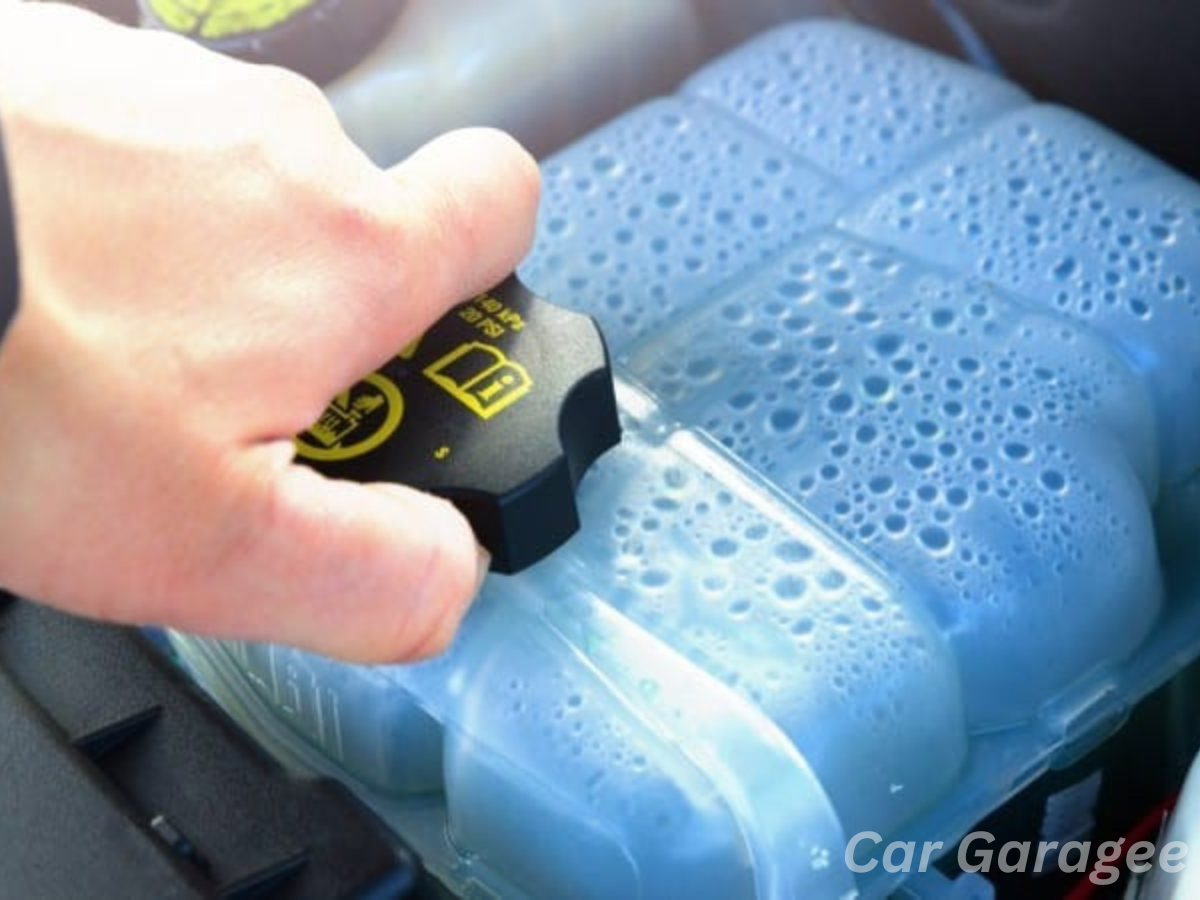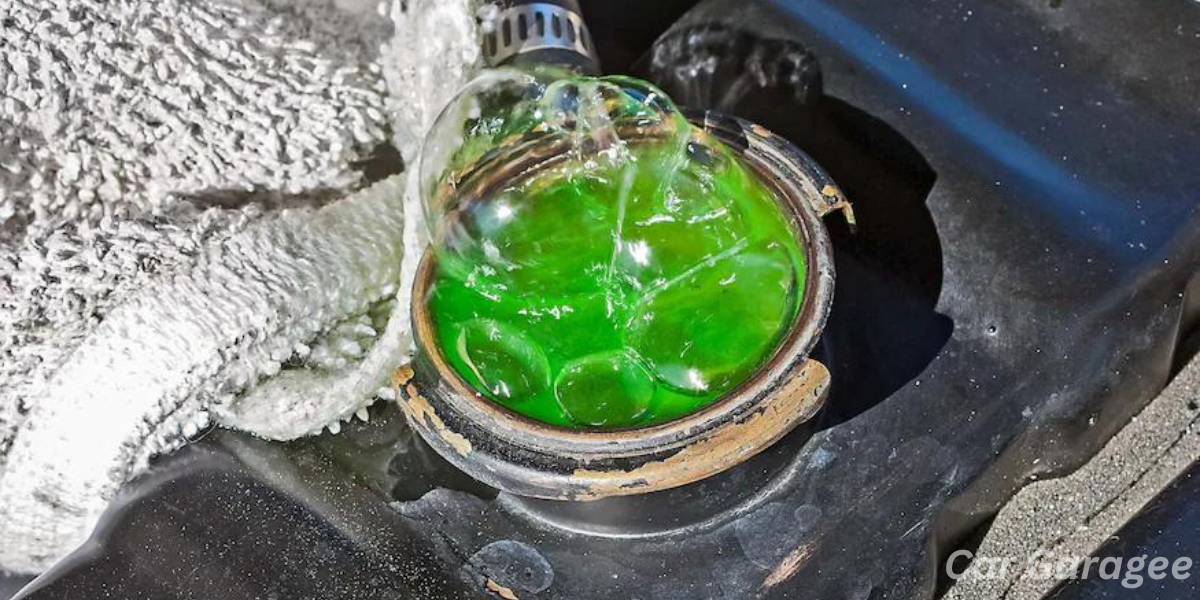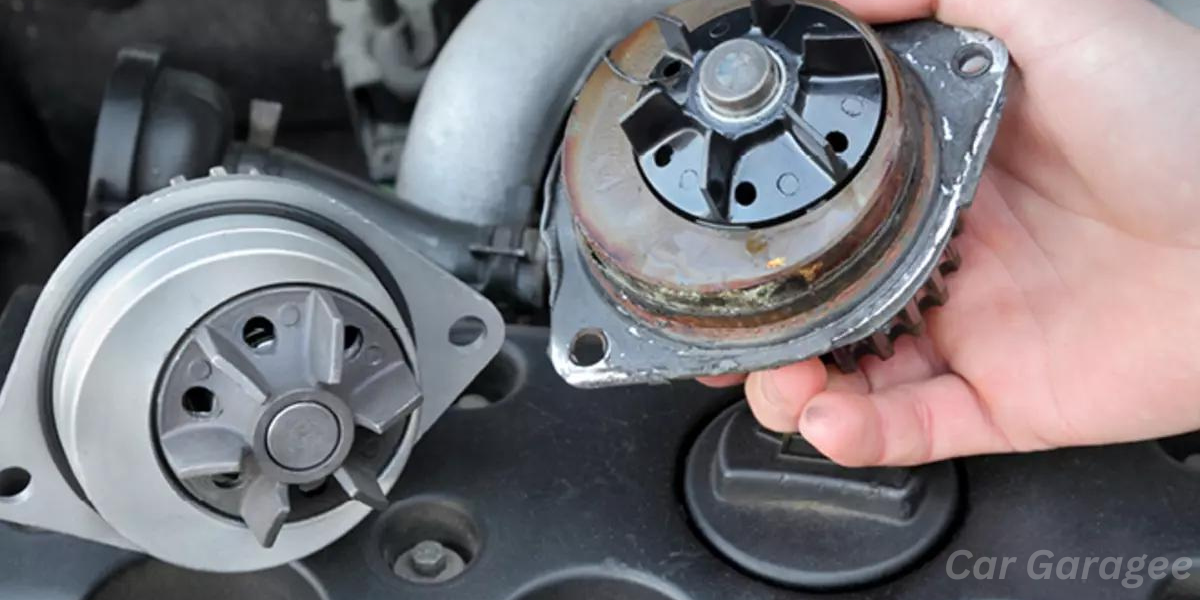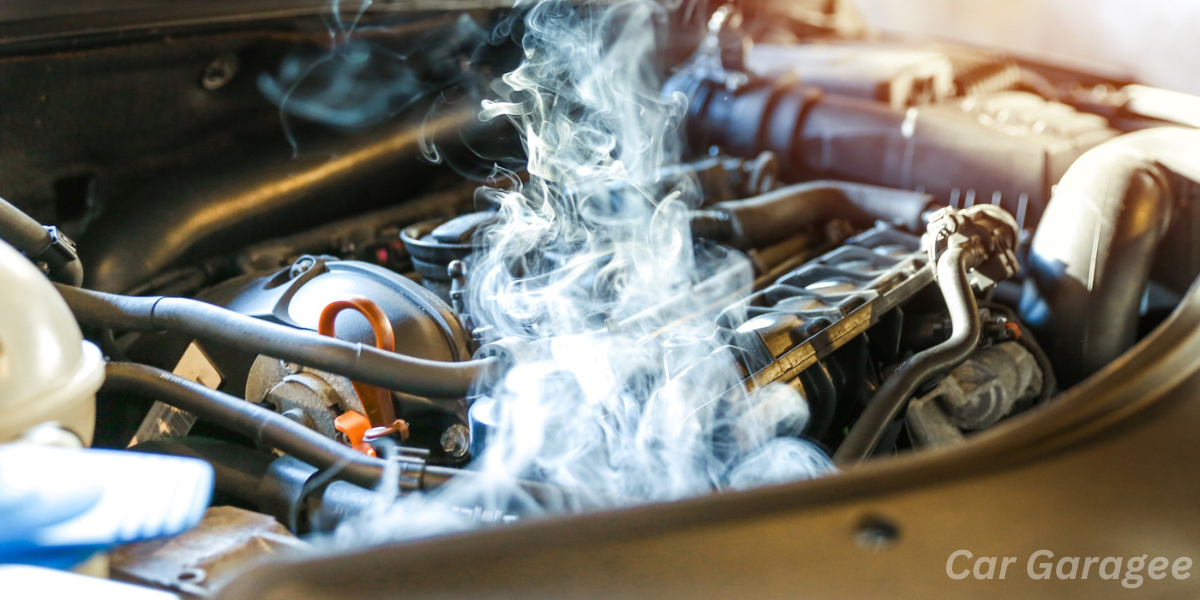When your coolant or antifreeze begins boiling in the reservoir, it’s often a sign of serious problems within the cooling system. In normal conditions, the coolant circulates through a sealed network of hoses, a pump, and various other components, maintaining a stable temperature for the engine. However, when the cooling system is disrupted, either by a faulty radiator cap, a blown head gasket, or contaminated coolant, it can cause the temperature to rise beyond the safe limits of 300 to 400 degrees Fahrenheit. This can lead to bubbling in the reservoir and may signal serious damage to the engine block or cylinder heads.
One of the most common causes of coolant boiling is incorrect pressure levels, which can be checked with a pressure test. If you notice bubbles forming or hear bubbling, it’s important to turn off the vehicle and let it cool. If the issue persists, it’s wise to have the car towed to an auto repair shop to avoid further costly repairs. Ignoring this phenomenon may lead to more severe issues, like overheating, blockages, or air pockets forming in the sealed system, disrupting the smooth flow of the coolant. The best way to handle this situation is to drive carefully, get regular inspection, and ensure no leaks or blockages affect the sealed loop.
Is Car Coolant Really Necessary For Your Car?
Coolant fluid plays a vital role in keeping your car running smoothly by controlling the temperature inside the engine. As fuel is burned inside the cylinders, it creates a lot of heat, and if this heat is not managed, it can cause the temperature to rise above a safe threshold. The cooling system, including the radiator and pump, helps to dissipate the excess heat.
Without coolant, which is a liquid mixture of water and antifreeze, the engine could overheat, leading to rapid wear of machine parts and damage. In fact, running a vehicle without proper coolant can even result in a blown cylinder head gasket or other severe components failure. Whether you’re in hot climates or dealing with extreme cold, the coolant is designed to prevent freezing, rust, and corrosion, keeping the system stable and the car operating at optimal performance.
If the coolant fluid starts boiling and spills into the reserve tank, it signals a problem with the radiator water or heater. Continuous boiling can lead to more serious issues like a fire or explosion under the hood, especially if left unattended. In such cases, it’s critical to check for adverse effects on the engine’s performance and to avoid stalling in heavy traffic or on the road. The importance of coolant in automotive engineering cannot be overstated; it ensures that the engine runs smoother, helps the oil retain its lubricating effect, and protects the vehicle from overheating. Regular checks and proper maintenance are key to avoiding any dangerous outcomes.
Why Is My Coolant Boiling In Reservoir?
If your coolant fluid is boiling in the reservoir, it’s an abnormal situation that needs immediate attention. During the driving process, your car generates heat, and the engine temperature naturally increases. The cooling system helps maintain a safe boiling point, but when there are faults in the system, such as a damaged head gasket or a faulty radiator cap, the coolant fluid can’t regulate temperature properly, causing it to boil and form bubbles in the reservoir. This is a sign of potential engine overheating, which can lead to severe issues.
The Impact of a Blown Head Gasket
One common cause of coolant boiling is a blown head gasket. The head gasket is responsible for sealing the combustion chamber and maintaining compression in the engine. When the gasket is damaged, it can allow gas, oil, and even coolant to mix, which increases the engine temperature and leads to harmful emissions like white smoke from the bonnet. This results in poor engine power and can cause coolant to leak, exacerbating the boiling issue. In extreme conditions, head gasket failure becomes even more likely.
Issues with the Radiator Cap and Cooling Fan
A damaged radiator cap can also cause the coolant boiling. The radiator cap is an essential part of the cooling system, helping to maintain pressure and prevent overheating. If the release valve gets stuck, it won’t be able to regulate the pressure, leading to an overheat situation. Additionally, if the cooling fan fails to operate, whether due to a blown fuse, damaged wire, or a failed fan clutch, the cooling efficiency drops significantly, allowing excess heat to build up in the system.
Air Pockets and Overheating
Air pockets trapped in the coolant fluid can disrupt its ability to flow smoothly, causing the engine temperature to rise. As the air expands in high temperatures, it creates an airlock that stops the coolant from circulating properly. This can result in an overheating scenario where the water pump and cooling fan struggle to maintain the right temperature. The temperature warning light on the dashboard will signal this issue, and you may notice steam and spewing from the radiator.
Thermostat and Water Pump Malfunction
Another key factor is a faulty thermostat. When the thermostat gets stuck in a closed position, it prevents the coolant fluid from circulating through the radiator, causing the engine block to overheat. Similarly, a faulty water pump can lead to inadequate cooling as it fails to pump the coolant effectively. If left unresolved, both of these issues can lead to boiling radiator water and serious engine damage.
The Importance of Proper Coolant Levels
Maintaining the correct coolant fluid levels is crucial for the system to work properly. If the coolant is depleted or contaminated, it will not be able to absorb heat effectively, leading to coolant boiling. The presence of air pockets can worsen the situation, disrupting the coolant’s ability to circulate and increasing the risk of overheating. Regular maintenance of the radiator and cooling components is vital to prevent this issue.
Preventive Measures and Repairs
Vehicle owners should monitor the temperature indicator regularly and perform preventive measures like checking for clogged radiators, ensuring the coolant fluid is topped up, and replacing worn-out car parts. If you notice bubbling or billowing steam from the engine, it’s crucial to pull over immediately and seek professional help to avoid expensive repairs. Flushing the cooling system and replacing the radiator cap are common fixes for resolving this issue.
>>Why Is Your Electronic Throttle Control Light Suddenly On?
How To Deal With The Coolant Boiling In Reservoir?
If your car’s radiator water is boiling and spewing out, it shows a drastic rise in the engine’s temperature. The first steps when you notice the temperature indicator rising are to pull over to a safe location and turn off the engine. Opening the radiator cap at this point is dangerous due to high temperature and pressure inside, which can release scalding water. Always wait until the engine has fully cooled down before touching anything under the hood.
Check Coolant and Components
Once cooled, check the coolant level in the reservoir tank. If it’s low, you need to add coolant to the recommended level. Additionally, ensure the radiator fan is functioning by starting the engine and confirming if the fan is spinning properly. If not, inspect for broken wires, dirt, or rust that might hinder performance. If you find any issues, it’s essential to consult a mechanic as the motor, relay, or sensor issues could also be causing faulty components that need to be replaced.
Inspect the Thermostat and Water Pump
A thermostat stuck in the closed position can prevent coolant from circulating, leading to coolant boiling. You can check the condition of the thermostat by removing the thermostat housing and placing it in boiling water. If it doesn’t open when exposed to boiling water, the thermostat is faulty and should be replaced. For those with mechanical knowledge, this can be done at home, but for others, seeking expert assistance is wise. Likewise, the water pump should be inspected for clogging or damage to ensure it’s operating correctly.
Radiator Flushing and Preventive Maintenance
Radiator flushing is necessary to keep the cooling system working efficiently. A specialized solution can dissolve deposits and scale that may block the system. Flushing with clean water and mild soap will help remove dirt and ensure there are no blockages in the fins. If cleaning the exterior fins or flushing seems overwhelming, taking the vehicle to a competent mechanic is a good option. Following the manufacturer’s maintenance schedule will also help prevent costly future repairs.
Identifying and Fixing Leaks
If the issue persists, avoid driving the car and get it towed to a repair shop. Coolant leaks are a common problem that can be identified using pressure testers available at automotive part shops. You can follow the tool instructions or watch online videos to conduct the test. However, professional help from an auto repair shop is often needed to pinpoint the exact cause and avoid serious engine consequences. Whether it’s a bad radiator cap, a damaged head gasket, or an air pocket trapped in the system, addressing the root cause will help prevent further engine damage and coolant boiling.
What Is The Boiling Point Of Car Coolant?
The coolant in your car generally boils at temperatures between 225 and 300 degrees Fahrenheit, but some types can withstand up to 300 or even 400 degrees Fahrenheit, depending on the brand and type. Adding too much water to the cooling system can cause the boiling point to drop, which is why it’s important for drivers to follow the manufacturer recommendation when deciding to buy coolant or buy antifreeze.
Pure water boils at 212 F and freezes at 32 degrees Fahrenheit, while antifreeze raises the boiling point of coolant and helps prevent freezing in cold weather. In warmer climates, a higher boiling point coolant is needed to handle extreme temperatures.
How to Maintain Car Radiator Water to Prevent Boiling
Regularly Inspect Radiator Water for Prevention
To prevent coolant boiling and ensure the radiator water is functioning optimally, it’s essential to follow some key maintenance steps. You should regularly inspect the radiator condition and periodically check the water level and quality. Following the manufacturer’s recommendations is critical to avoid a dirty radiator or a clogged radiator, which can obstruct coolant flow and lead to elevated engine temperatures. Cleaning off dirt and dust with a gentle pressure spray or soft brush will help keep the system in good working order.
Replacing Faulty Thermostats and Fans
A thermostat is responsible for regulating the coolant temperature inside the engine, so if the thermostat is defective or has a stuck valve, it can disrupt circulation and cause the coolant boiling. If the open valve is faulty, it’s important to replace faulty thermostats immediately to avoid overheating. Additionally, radiator fans must be functioning correctly; if the fan is not turning when the engine is hot, the malfunctioning fan will fail to cool the coolant properly, leading to a spike in engine heat.
Inspect for Leaks and Replace Damaged Components
Replace leaky cylinder head gaskets as soon as possible because damaged gaskets can cause combustion gasses to enter the cooling system, creating air bubbles or foam in the expansion reservoir. This reduces the water pump’s ability to circulate coolant effectively. It’s also important to inspect and replace damaged seals to prevent air leaks that may result in reduced internal pressure.
Avoid Excessive Engine Use and Maintain the System
To avoid coolant boiling, it’s important not to push the engine too hard. Avoid driving at high speeds, on steep inclines, or in heavy traffic for extended periods, as this can increase the workload and lead to excess heat generation. If the temperature rises, stop at a safe location and allow the engine to cool down. Routine maintenance of the lubrication system and overall comprehensive maintenance of the car will ensure a healthy cooling system and prevent further problems.
Why does air in the cooling system cause overheating?
When there is a leak in the cooling system, the pressure drops, which reduces the boiling point of the coolant or antifreeze in pressurized systems. The pressure cap is responsible for maintaining pressure, but if there is an issue, coolant boils and may cause overflow, which can raise the temperature. A blown head gasket allows air to enter the system, creating bubbling as the coolant flows past the cylinder head.
The air fills the spaces where liquid leaks should be, reducing pressure in the cylinders. As a result, the fluid reaches its boiling point faster, especially if there is a head gasket leak, leading to overheating. This is often accompanied by white steam from beneath the bonnet. A faulty pressure cap or a crack in the engine block can also affect the coolant flow, causing the engine to overheat as the fluid boils.
FAQS
What causes coolant to boil in the radiator of a car’s engine while it is running, but not when the car is off?
When your engine overheats while running but stays cool when the car is off, several things could be causing the issue. A thermostat stuck shut can prevent coolant from flowing, leading to overheating and coolant boiling. A defective water pump or cooling fan can also cause problems, especially at low speed or idle speed, when airflow is reduced.
While the temperature might seem fine at highway speeds, it can rise when the car slows down. A clogged radiator core filled with grass, insects, or debris can block the cooling flow. Sometimes, an air pocket forms, preventing coolant from circulating properly, especially if the thermostat is not opening. In cases of a blown cylinder head gasket, bubbles may form in the radiator or cooling system reservoir, causing pressure to drop when the engine is off, leading to further cooling issues.
What would cause my coolant reservoir to boil?
A blown head gasket is a common cause of coolant boiling in the reservoir. When the cylinder heads are damaged, air pressure from the combustion chamber can escape into the cooling system, causing escaped air to enter the coolant and create bubbling. This trapped air prevents the antifreeze from circulating properly, leading to overheating and eventually making the coolant in the reservoir start boiling.
Why is my engine coolant bubbling in the reservoir?
If your coolant tank has bubbles, it could be caused by a worn head gasket or a blown head gasket. When the gasket is damaged, combustion gasses from the cylinder can leak into the cooling system, forcing air into the water jacket and cylinder head. This disrupts the normal flow of coolant, creating bubbles and potentially leading to overheating and coolant boiling.
Does bubbling coolant always mean blown head gasket?
Not always. While bubbling in the coolant can be a sign of a blown head gasket, there could be other causes like back-pressure in the vehicle’s cooling system. A mechanic should perform a thorough diagnosis to determine the exact cause. Depending on the issue, the repair options and cost can vary. If it is indeed a blown head gasket, the fix can be expensive, but it’s important to know for sure before making decisions.
Why is my coolant flowing back into the reservoir?
If your vehicle’s thermostat is stuck closed, it prevents coolant from flowing as it should. As the coolant cannot pass through, it continues to heat up and expand, causing excess coolant to flow into the coolant reservoir. When the coolant builds up, it often spills over the top of the reservoir. This can happen because the pressure inside the cooling system increases too much when the coolant won’t circulate properly.

Mian Hashir is a passionate automotive enthusiast and the lead author at Car Garagee, a website dedicated to providing in-depth car reviews, maintenance tips, and the latest news in the automotive world. With years of experience in the industry, Hashir combines his technical knowledge with a love for cars to deliver insightful and engaging content. Whether you’re a car owner or a curious reader, Mian Hashir’s articles help readers make informed decisions, from choosing the right vehicle to understanding how to keep it in top condition.













